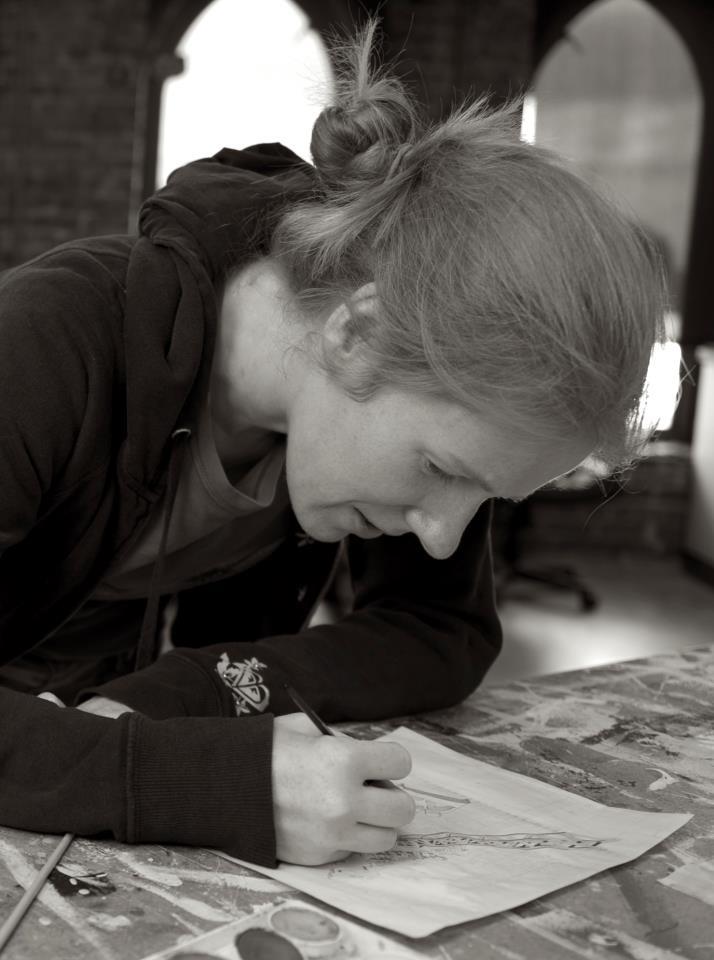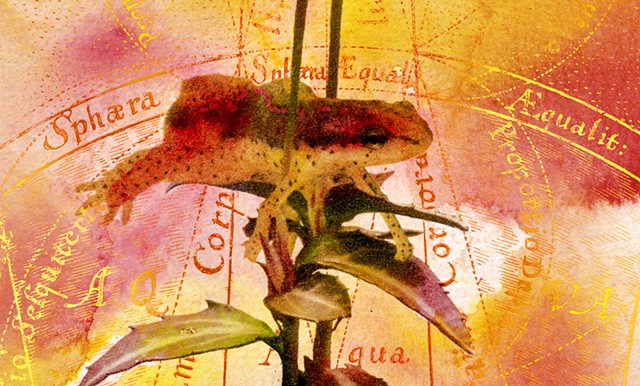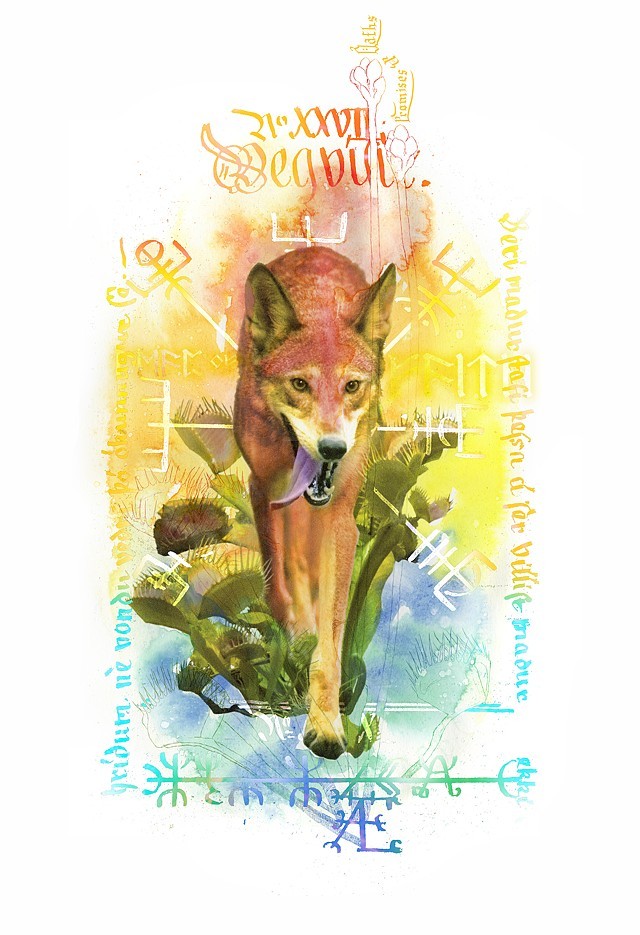
What are some of the surprising similarities between social bots and the early medieval witch’s familiar you explore in Familiar Shapes?
One thing many of my interview subjects mentioned is that the familiars and bots both transgress boundaries. They are literally ‘familiar’, that is, every day, common things. Because of these, we don’t notice as readily when they interrupt our private spaces, not until the damage is done. The early modern witch’s familiar was often a mouse, dog, cat, or fly, common enough to be found in or near many early modern homesteads. Similarly, bots are everywhere online. Many are quite helpful (banking bots, weather bots) and they make it clear to you that they are, in fact, a bot. But as the recent Twitter purges demonstrate, there are many that are masquerading as people when, in fact, they are algorithms. In the case of the bot pretending it’s a SAHM, and the familiar curled up by the fire in the guise of a cat, they lull us with their familiarity and we invite them into private spaces, be they networks of friends, or hearths. The other thing I’ve observed, is that they both inspire paranoia. Yes, bots are real, and bots designed to trick systems into making certain news items or posts appear more popular are a real danger. They capitalize on our weak media literacy, and sheer mass of new information we’re bombarded with every day in online spaces. And odds are, the early modern witch’s familiar was, in fact, a common pet. But it’s our anxiety about them doesn’t help us tackle the problems, it makes it worse in some ways.
What have you learned in your interviews with experts on bots about the power of their influence? What can be expected next from their creators?
Well, first, let’s define terms. A social bot is simply an automated piece of code designed to perform some (usually) simple task on an online social space. These can be really helpful, or even funny, or creative. Not all bots are ‘bad bots’. When talking specificially about ‘malicious bots’, I learned very quickly that there are many, many different kinds and they range widely in complexity and application. Some of the simplest malicious bots simply like or retweet posts. So if you want to make yourself look popular online, you can rent a thousand bots (they’re pennies each) and this have them all follow you and like and retweet what you say. But they can get much more complex from there, including hybrid bots (sometimes also called cyborgs) where a bot initiates an interaction with a user, and then the human bot master can jump in and deepen the interaction if it looks like the hook has caught a fish, so to speak. And making a bot is really really easy. There’s ton of free code on GitHub to make your own bot. But making a really sophisticated, complex bot is pretty hard still. Nevertheless, with malicious bots, there’s really an arms race happening between the developers and the researchers trying to detect them. Everybody can read the same research journals, after all, whether you’re working create bot detection systems, or you’re designing bots to avoid those systems.
Also, bots generally do not create false information, but they do affect how it trends. In on-line spaces, we equate ‘popular’ with ‘true’. Simple bots can very easily look at what’s trending and then repost it, artificially boosting it’s social value. Bots aren’t just created and disseminated by the Russian Internet Research Agency, they’re also made my every day people. And because they’re so cheap (and there’s nothing illegal about creating, using, or disseminating them) individuals, groups, and companies all can and do use them.
Familiar Shapes documentary teaser.
Our best defense right now is to be skeptical AF of pretty much everything we see on-line and to do our own information vetting. It’s also helpful to do whatever you can to break out of your own echo chamber. This is, of course, SUPER uncomfortable. It, frankly, our democracy will depend on it. One somewhat-less-painful way to do this is subscribe to ‘competing’ news feeds. So my news feed gives me BBC, NPR, CNN FOX, MSNBC, Al Jazeera, Drudge Report (I try to avoid far left and right like Buzzfeed and Breitbart just because there’s too much click bait to sort through.)
And on that topic, I’d recommend everyone treat this next think like brushing your teeth: do it for your whole health, and make it a habit. Always, *always*, read the entire article before liking it or sharing it. See a headline that says, “Teachers Now Required to Carry Guns in Springfield” or “Kids Learn About Homosexuality in Math Class”? Depending on your vantage, either of those headlines might trigger you. DON’T share it, DON’T like it, don’t do a THING with it until you read, actually read, the entire article. Don’t have time? No worries, just ignore it and move on to the kittens in tea cups. Is it haunting you all day? Cool. Read the article, vet it carefully, and be suspicious. Look for other articles from other news sources that follow up on that topic. If you realize the headline is actually click bait, or totally lying, you’ll be glad you didn’t share it.
In your interviews with experts on the era did you find out any surprising things about early medieval witchcraft and familiars, or, for that matter, egregores?
First, it’s important to realize that early modern witches and contemporary Pagan Witches are not the same thing. I could be wrong on this, but my understanding is that the term ‘egregore’ as contemporary Pagans use it is a relatively modern concept, popularized by Eliphas Lévi. I read somewhere that it’s used in the Book of Enoch, but I imagine the use of it is very different. Quoting Inoga Montoya: “I do not think it means what you think it means.” But this is outside my realm of research, so take all that with a giant grain of salt!
What I did find surprising was that pretty much everything I learned in high school back in the 90s about the early modern witch trials was wrong. I always thought the witch trials happened because of moldy bread and modern physicians kicking midwives out. No doubt there’s cases of that, but the role of the Reformation, and layers of really profound stressors (wars, inquisitions, plague, the mini ice-age, migrations of people, etc.) on European societies created a situation where people were really at the end of their tethers, a fear of witchcraft already existed, and local and regional regimes were more than happy to (often tenuously) hold onto power by letting people accuse their neighbors of witchcraft.
Another thing that surprised me is that the witch’s familiar really didn’t exist in much of Europe, you really only find records of it in England and the Basque Country of Spain. You do see records of witch’s interactive with fairies or the Devil, but the idea of the familiar as a diabolic servitor is very specific to those regions, and it’s unclear where the idea of the familiar comes from and why those specific areas.
What inspired your gorgeous Carolinian Herbal?
Basically, about ten years ago I was walking in the woods behind our house one day and realized I was surrounded by all these amazing living things, the plants around me, and I didn’t know jack about them. It was pretty mortifying actually, because my mom and grandma were both big gardeners and know a ton about botany, both native and naturalized species. So I started walking around in the woods with a camera, later a cell phone, photographing the plants I found, and then going back to my mom’s old plant books and trying to ID them. I started with small flowering plants, easy to identify things, and I’m still going. I’ve got most of our trees down, although I’m still stumped by the different hickory trees a lot of the time. I’ll get there. And if I venture outside our immediate woods, I’ll often find lots of trees and shrubs I just don’t know yet. Anyway, that’s a long story to say that it started with a desire to educate myself about the natural world around me. I highly recommend it for anyone it’s great fun, actually, and my kid is pretty good at it too now. Some of my mom’s plant books were these kooky things from the 70s about medicinal herbalism, and I sort of laughed at them at first, but then I got pretty into it. I eventually found a used copy of A Modern Herbal by Mrs. M. Grieve, and got sucked into the world of plant lore. Because this part of North Carolina is home to the Catawba and Cherokee, I eventually got my hands on a copy of Daniel Moerman’s Native American Medicinal Plants, and things just kept exploding out from there. I started to really appreciate individual plants like some people appreciate seeing a deer… it’s a unique, living thing, a fellow traveler on this planet, fundamentally different, and fundamentally the same. So I started pairing up regional plants and animals, both native and naturalized, invasive and extinct in the region. A lot of this investigation followed my readings in folklore, myths, and fairytales, and how these stories track, evolve, merge, converge and separate along with the travels and migrations of people.
In combining plants and animals in a single image, I realized I was adding to that folklore, potentially creating new ones. For example, there are many rich collections of stories about Coyote from across the western half of the continent. But coyote, the species, has only been in the Carolinas since about the 1980s, so does He bring his stories with Him, or are they unique? I’d argue a little bit of both. My personal impression is that Coyote of the Carolinas is still, well, Coyote, but he’s also a force of justice and rebalance, even if its painful or violent. In killing off the native wolf populations of the Southeast, we set up an ecological void. And while carefully regulated hunting help keep deer populations mostly stable, they’re clever in their own right: the bulk of North Carolina’s deer populations cluster around our most urban centers where hunters can’t safety cull herds. Enter coyote. There’s not a ton of research into how or if they are controlling urban deer populations, but my fingers are crossed.
Anyway, I’ve also talked a lot about these works in this interview here: https://keepingwatch.org/programming/habitat/the-carolinian-herbal
Your Automatic Evo-divinations are inspired by the art and writings of surrealist mystic Ithell Colquhoun. What art or books by her have influenced you most? Has she influenced your technique?
I love Decad of Intelligence recently published by Fulgur. I don’t know that it’s a particular work of hers, however, so much as the openness of her process, how she used creative ‘accident’ to inform a deeply intuitive creative process. I really admire the works of Austin Osman Spare as well, but I think physicality of Colquhoun’s process really resonates with me. I admire the creative honesty of both of them, I guess I can put it that way.
Coyote (Spirit Photography)
Artemis your starkly beautiful animated short was shown at around forty festivals, what kind of reactions did it inspire?
Ah, unfortunately, I don’t get to travel to many of the film festivals I screen at, but I have been able to attend a few. There’s the reasonable gasping when the deer gets hit by the car. (Are there spoilers for 4-minute films? Sorry.) I love the sort of confused, nervous laughter when the ghosts of Elvis and Apollo pull up and throw the deer in the pick up. Honestly, I’m not sure people can tell who they’re supposed to be (well, I think Elvis makes himself obvious). Oh, and there’s the laughter when the deer flies off after Artemis. When I storyboarded the scene, I envisioned it totally sad and beautiful and mystical. But there is just no f*cking way to make a stop motion deer fly off into the sky without everybody thinking about Rudolph. I struggled with that scene and finally just decided to own it. I don’t typically do ‘beautiful and mysterious’, and every time I try, it just comes out comedic. Guess I should learn something from that at some point!
What inspires you about photogrammetry of objects as art?
Part of it is very practical. The world is full of these amazing collections of historic objects, but unless you live nearby, most of us will only ever experience them in a book. While there’s obviously a lot of the world that isn’t ‘wired’ yet, photogrammetry is an amazing way for people to experience a physical artifact, even to get up ‘close’ in a way you wouldn’t be able to do in many museum settings.
What inspired your experimental short film and video spell Spell to Draw Bees Back to an Empty Hive?
Ha, I was just goofing around, actually. I mentioned Coyote above, and I made that image to try and ‘entice’ Coyote into rebalancing our beehive. My husband tried his hand at beekeeping, but after losing two hives to CCD, we decided to give up and bow down to successful beekeepers. After cleaning it out, we put the hive back out and hoped maybe a random colony would decide to occupy it. So the film is a screen-based spell casting in which I try to encourage Coyote to take on his sun-like qualities and draw the bees back. Well, no luck. But we have lots of coyotes in the woods now, so maybe it worked in a way I hadn’t expected. He’s a trickster, for sure.
Your work has won dozens of awards, you’ve contributed to dozens of conference publications and presentations, including pieces for books and journals. Your films have screened in over 100 festivals, you art’s been shown in even more exhibits, not to mention your creative public service, participation in editorial boards and panels, creative community service, your work as a journal, competition and conference reviewer and a Professor of Digital Media at UNC, plus you’re an attentive mom whose experiences with your son help inspire your research and art. Girl, how do you do it?
Well, first, I don’t do it all at once! All that’s happened over nearly two decades, it’s do-able. But I’ve struggled with balance a lot. My mom was of the generation of super-moms: they kept house 1950s-style for their husbands, worked full time, went to school at night, did the PTA, the whole thing. And she was burned out and depressed most of the time. She wasn’t fundamentally happy, although she loved ever single thing she did. When I got out of school (before I went back into school, ha) I always said, “No kids, no husband, and then I can do it all and be happy and sane.” I love working on creative projects, I love getting passionate about totally new things, throwing myself into them, and learning the hell out of some topic or other. That’s all I wanted to do.
But what I’ve found is that I ended up with a remarkably supportive partner in my husband. When our son was a baby and my mom was dying and I was trying to get tenure and juggle everything, he did it all to keep shit together. He is, hands down, a much better mom and dad that I will ever be. Things are a lot more balanced now, but I know we’ll face other challenges and crises: that’s just part of life. We’ve learned to support each other, to encourage each other to go off and do the things we love. To this day I’m totally amazed by him as a father, husband, and human being. So I got lucky, but also made a pretty damn good choice proposing to him! All that to say, I’ve never done anything alone, I’ve always leaned on the support of friends and family. I just hope I’m consistently doing the same for them in turn.
Familiar Shapes
A documentary about social bots, misinformation, early modern witches, and how human behavior shapes them.
https://www.familiarshapesthemovie.com/
The Moving Image Workshop: Introducing animation, motion graphics and visual effects in 45 practical projects.
www.bloomsbury.com/9781472572004/
Heather D. Freeman art.


















